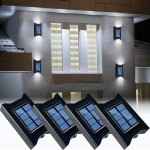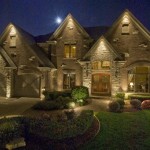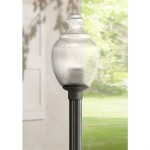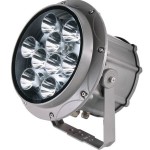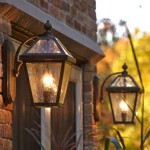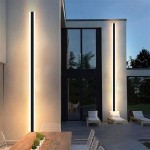Refinishing Outdoor Metal Tables: A Comprehensive Guide
Outdoor metal tables are a common feature of patios, gardens, and decks, offering a durable and stylish surface for dining and relaxation. However, exposure to the elements inevitably takes its toll, leading to rust, chipping paint, and a generally worn appearance. Refinishing a metal table can significantly extend its lifespan, restore its aesthetic appeal, and protect it from further damage. This guide provides a comprehensive overview of the process, outlining the necessary steps, materials, and techniques for successfully refinishing an outdoor metal table.
Preparation: The Foundation for a Lasting Finish
The success of any refinishing project hinges on thorough preparation. Neglecting this crucial phase can result in a subpar finish that quickly deteriorates. The primary goals of preparation are to remove existing rust, old paint, and any other contaminants that could impede adhesion of the new finish. This involves a combination of cleaning, sanding, and potentially more aggressive rust removal methods.
The first step is to clean the table thoroughly. Use a solution of warm water and mild detergent to remove dirt, grime, and any loose debris. A scrub brush can be helpful for reaching into crevices and removing stubborn stains. Rinse the table thoroughly with clean water and allow it to dry completely before proceeding.
Once the table is clean and dry, the next step is to remove loose paint and rust. This can be accomplished using a variety of tools, depending on the severity of the damage. For light rust and flaking paint, a wire brush or sandpaper may suffice. Medium-grit sandpaper (around 80-120 grit) is a good starting point, followed by finer-grit sandpaper (around 180-220 grit) to smooth the surface. Focus on areas where paint is peeling or rust is present, feathering the edges of the sanded areas to create a smooth transition to the existing finish.
For more significant rust accumulation, more aggressive methods may be required. A power sander with a sanding disc or a wire wheel attachment can be effective for removing heavy rust. A rust remover chemical product can also be used. These chemicals are designed to dissolve rust and can be applied according to the manufacturer’s instructions. It is crucial to wear appropriate personal protective equipment (PPE), such as gloves and eye protection, when working with rust removal chemicals. A respirator may also be necessary if the chemicals release fumes. Always work in a well-ventilated area.
After removing the rust and old paint, thoroughly inspect the table for any imperfections, such as dents or scratches. These can be filled with an appropriate metal filler or body putty. Apply the filler according to the manufacturer’s instructions, allow it to dry completely, and then sand it smooth to match the surrounding surface. Ensure the filler is fully cured before proceeding to the next stage.
Finally, thoroughly clean the table once again to remove any sanding dust or residue from the rust removal process. A tack cloth is ideal for this purpose, as it will pick up even the finest particles. The table should be completely clean and dry before applying primer.
Priming: Ensuring Adhesion and Corrosion Protection
Priming is an essential step in refinishing metal tables. Primer serves two primary purposes: it provides a strong adhesive bond between the metal surface and the topcoat, and it offers corrosion protection, preventing rust from returning. Choosing the right primer is crucial for achieving a durable and long-lasting finish.
For outdoor metal furniture, a rust-inhibiting primer is highly recommended. These primers contain chemicals that prevent rust formation, even if the topcoat is scratched or chipped. There are several types of rust-inhibiting primers available, including zinc-based primers, epoxy primers, and self-etching primers. Zinc-based primers offer excellent corrosion protection but may require a specific topcoat for optimal performance. Epoxy primers are known for their durability and resistance to chemicals, making them a good choice for high-wear applications. Self-etching primers contain phosphoric acid, which etches the metal surface, creating a strong bond. These primers are particularly useful for smooth or non-porous metals.
Apply the primer in thin, even coats, following the manufacturer’s instructions. Avoid applying the primer too thickly, as this can lead to drips and runs. Multiple thin coats are preferable to a single thick coat. Allow each coat to dry completely before applying the next. The drying time will vary depending on the type of primer and the ambient temperature and humidity. Consult the manufacturer’s instructions for specific drying times.
Once the primer has dried completely, lightly sand it with fine-grit sandpaper (around 320-400 grit) to create a smooth, uniform surface for the topcoat. This will help the topcoat adhere better and result in a more professional-looking finish. Be careful not to sand through the primer layer, as this will expose the bare metal and compromise the corrosion protection. After sanding, thoroughly clean the table again to remove any sanding dust.
Topcoat Application: Achieving the Desired Look and Durability
The topcoat is the final layer of protection and the element that determines the appearance of the refinished table. Selecting the right topcoat is crucial for achieving the desired aesthetic and providing long-lasting durability. There are several types of topcoats suitable for outdoor metal furniture, each with its own advantages and disadvantages.
Oil-based paints are a traditional choice for outdoor metal furniture. They offer good durability and resistance to the elements, but they tend to yellow over time and can be difficult to clean up. Acrylic paints are a more modern option that offers excellent color retention and ease of cleaning. They are also more environmentally friendly than oil-based paints. Enamel paints are known for their hardness and durability, making them a good choice for high-wear applications. However, they can be brittle and prone to chipping. Powder coating is a more specialized finish that is applied electrostatically and then cured with heat. It provides a very durable and long-lasting finish that is resistant to scratches, chips, and rust. However, powder coating requires specialized equipment and is typically done by professionals.
Regardless of the type of topcoat chosen, it is essential to apply it in thin, even coats, following the manufacturer’s instructions. Use a high-quality brush, roller, or spray gun for best results. Avoid applying the topcoat too thickly, as this can lead to drips, runs, and an uneven finish. Multiple thin coats are preferable to a single thick coat. Allow each coat to dry completely before applying the next. The drying time will vary depending on the type of topcoat and the ambient temperature and humidity. Consult the manufacturer’s instructions for specific drying times.
When applying the topcoat, pay attention to detail and ensure that all surfaces are evenly covered. Work in a well-ventilated area and wear appropriate PPE, such as gloves and a respirator, to protect yourself from fumes and paint particles. If using a spray gun, maintain a consistent distance and angle to avoid creating an uneven finish. Practice on a piece of scrap metal before applying the topcoat to the table to get a feel for the spray gun and the paint consistency.
After applying the final coat of topcoat, allow it to dry completely according to the manufacturer’s instructions. Once the paint is fully cured, inspect the table for any imperfections, such as drips, runs, or uneven areas. These can be lightly sanded with fine-grit sandpaper (around 400-600 grit) and then touched up with more topcoat if necessary.
Consider applying a clear coat to further enhance the durability and protect the finish. A clear coat can be applied over the topcoat to provide an additional layer of protection against scratches, chips, and UV damage. Choose a clear coat that is compatible with the topcoat and follow the manufacturer’s instructions for application. Allow the clear coat to dry completely before using the table.
By following these steps and using the appropriate materials, it is possible to successfully refinish an outdoor metal table and restore it to its former glory. Proper preparation, priming, and topcoat application are all essential for achieving a durable and long-lasting finish. With a little patience and attention to detail, the refinished table will provide years of enjoyment.

How To Spray Paint Metal Outdoor Furniture Last A Long Time H2obungalow

How To Paint Metal Patio Furniture

Outdoor Furniture Transformation

How To Paint Metal With Rust Oleum Universal

How To Paint Metal Patio Furniture So It Looks Like A Million Bucks

How To Paint Metal Patio Furniture

How To Paint Metal Patio Furniture So It Looks Like A Million Bucks

How To Refinish Metal Patio Furniture That S Covered In Rust

Outdoor Furniture Refinishing When Should You Refinish Metal Houston Powder Coaters Coating Specialists

How To Paint Metal Patio Furniture With Spray Joyful Derivatives
